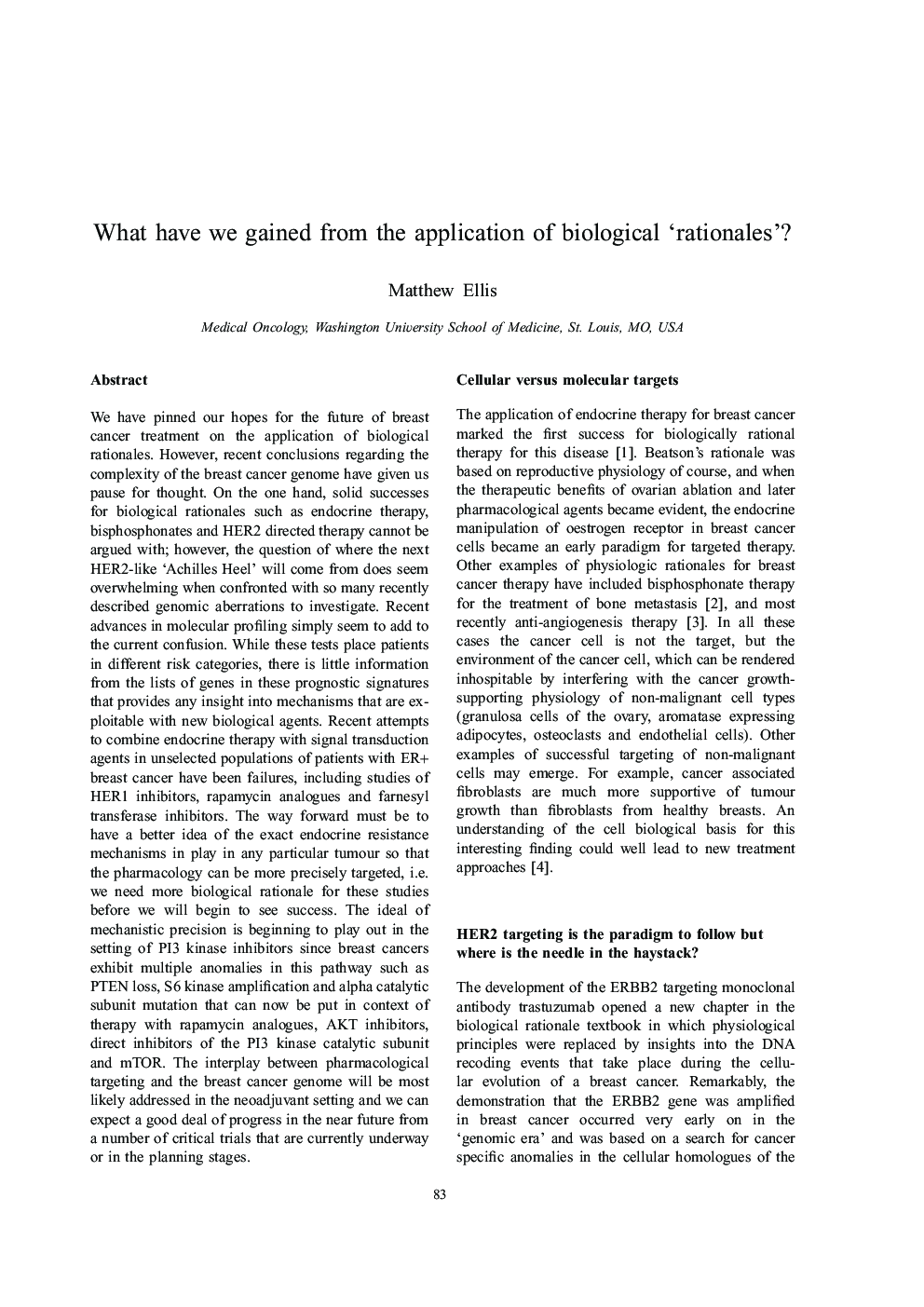| کد مقاله | کد نشریه | سال انتشار | مقاله انگلیسی | نسخه تمام متن |
|---|---|---|---|---|
| 2129602 | 1547627 | 2007 | 6 صفحه PDF | دانلود رایگان |

We have pinned our hopes for the future of breast cancer treatment on the application of biological rationales. However, recent conclusions regarding the complexity of the breast cancer genome have given us pause for thought. On the one hand, solid successes for biological rationales such as endocrine therapy, bisphosphonates and HER2 directed therapy cannot be argued with; however, the question of where the next HER2-like ‘Achilles Heel’ will come from does seem overwhelming when confronted with so many recently described genomic aberrations to investigate. Recent advances in molecular profiling simply seem to add to the current confusion. While these tests place patients in different risk categories, there is little information from the lists of genes in these prognostic signatures that provides any insight into mechanisms that are exploitable with new biological agents. Recent attempts to combine endocrine therapy with signal transduction agents in unselected populations of patients with ER+ breast cancer have been failures, including studies of HER1 inhibitors, rapamycin analogues and farnesyl transferase inhibitors. The way forward must be to have a better idea of the exact endocrine resistance mechanisms in play in any particular tumour so that the pharmacology can be more precisely targeted, i.e. we need more biological rationale for these studies before we will begin to see success. The ideal of mechanistic precision is beginning to play out in the setting of PI3 kinase inhibitors since breast cancers exhibit multiple anomalies in this pathway such as PTEN loss, S6 kinase amplification and alpha catalytic subunit mutation that can now be put in context of therapy with rapamycin analogues, AKT inhibitors, direct inhibitors of the PI3 kinase catalytic subunit and mTOR. The interplay between pharmacological targeting and the breast cancer genome will be most likely addressed in the neoadjuvant setting and we can expect a good deal of progress in the near future from a number of critical trials that are currently underway or in the planning stages.
Journal: European Journal of Cancer Supplements - Volume 5, Issue 5, September 2007, Pages 83-88